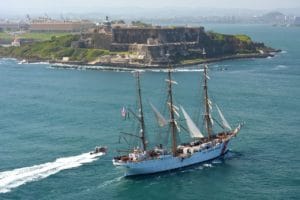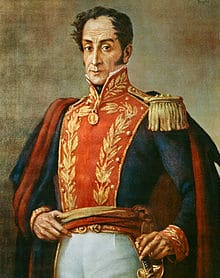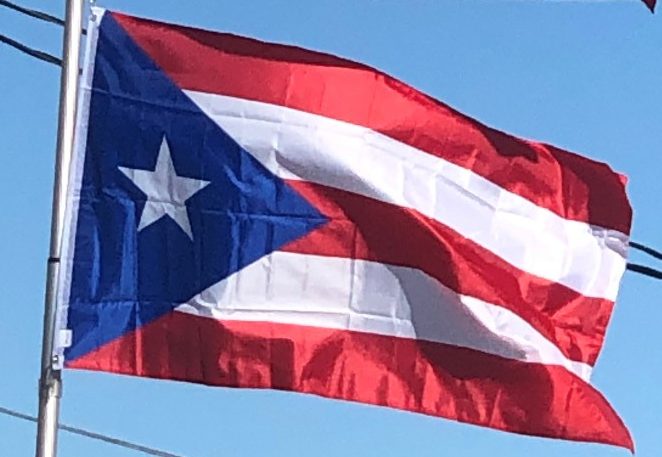By the end of the 16th century, the Spanish Empire was diminishing and, in the face of increasing raids from European competitors, the colonial administration throughout the Americas fell into a “bunker mentality”. Imperial strategists and urban planners redesigned port settlements into military posts with the objective of protecting Spanish territorial claims and ensuring the safe passing of the king’s silver-laden Atlantic Fleet to the Iberian Peninsula.

San Juan served as an important port-of-call for ships driven across the Atlantic by its powerful trade winds. West Indies convoys linked Spain to the island, sailing between Cádiz and the Spanish West Indies. The colony’s seat of government was on the forested Islet of San Juan and for a time became one of the most heavily fortified settlements in the Spanish Caribbean earning the name of the “Walled City”.
Late Colonial Period:
During the late 16th and early 17th centuries, Spain concentrated its colonial efforts on the more prosperous mainland North, Central, and South American colonies. With the advent of the lively Bourbon Dynasty in Spain in the 1700s, the island of Puerto Rico began a gradual shift to more imperial attention. More roads began connecting previously isolated inland settlements to coastal cities, and coastal settlements like Arecibo, Mayaguez, and Ponce began acquiring importance of their own, separate from San Juan. The increasing number of Atlantic wars in which the Caribbean islands played major roles, like the War of Jenkins’ Ear, the Seven Years’ War and the Atlantic Revolutions, ensured Puerto Rico’s growing esteem in Madrid’s eyes.
In 1809, to secure its political bond with the island and in the midst of the European Peninsular War, the Supreme Central Junta based in Cádiz recognized Puerto Rico as an overseas province of Spain. This gave the island residents the right to elect representatives to the recently convened Spanish parliament, with equal representation to mainland Iberian, Mediterranean, and Atlantic maritime Spanish provinces.
Politics of Liberalism:
In the early 19th century, Puerto Rico spawned an independence movement that, due to harsh persecution by the Spanish authorities, convened in the island of St. Thomas. The movement was largely inspired by the ideals of Simón Bolívar in establishing a United Provinces of New Granada and Venezuela, that included Puerto Rico and Cuba. The movement was discovered, and Governor Miguel de la Torre had its members imprisoned or exiled.

With the increasingly rapid growth of independent former Spanish colonies in the South and Central American states in the first part of the 19th century, the Spanish Crown considered Puerto Rico and Cuba of strategic importance. To increase its hold on its last two New World colonies, the Spanish Crown revived the Royal Decree of Graces of 1815 as a result of which 450,000 immigrants, mainly Spaniards, settled on the island in the period up until the American conquest. Printed in three languages—Spanish, English, and French—it was intended to also attract non-Spanish Europeans, with the hope that the independence movements would lose their popularity if new settlers had stronger ties to the Crown. Hundreds of non-Spanish families, mainly from Corsica, France, Germany, Ireland, Italy and Scotland, also immigrated to the island.
